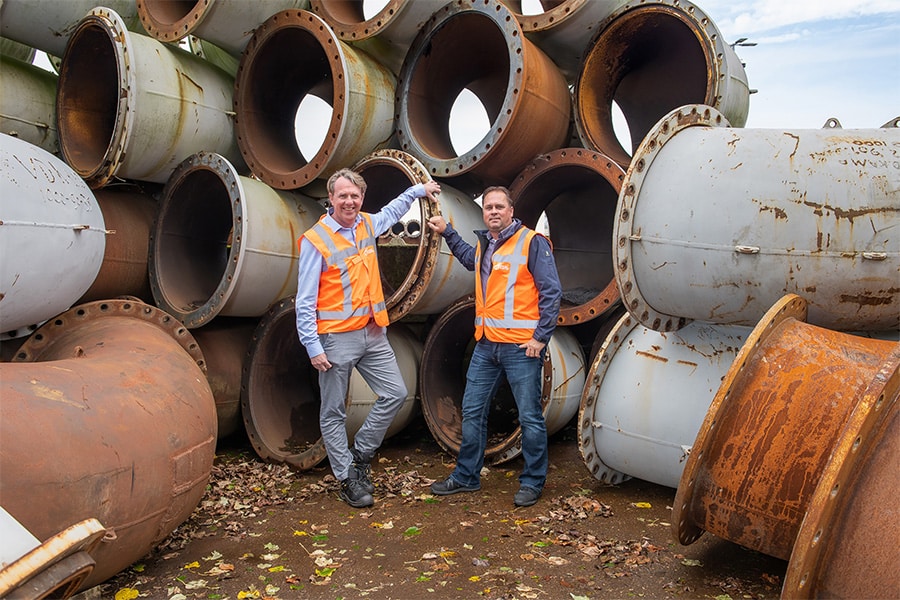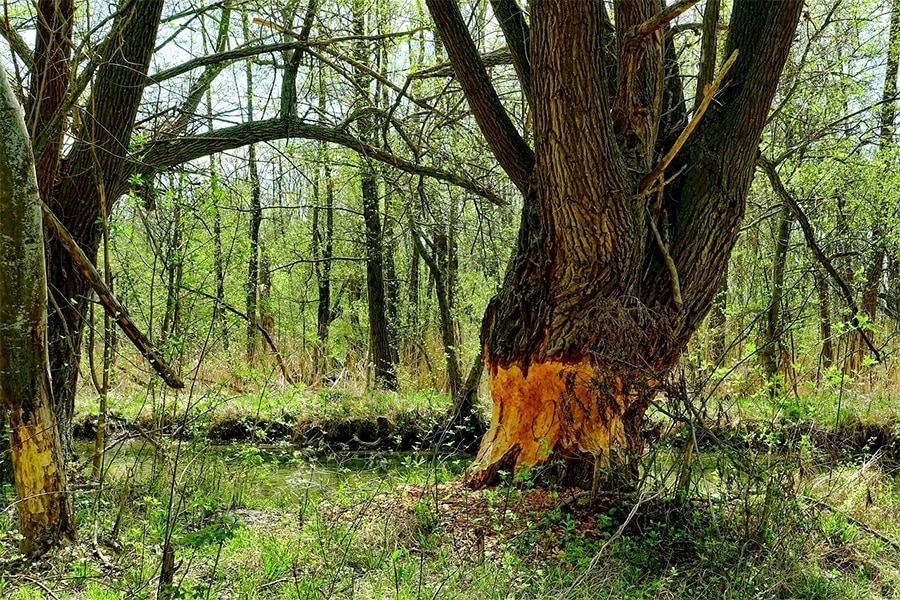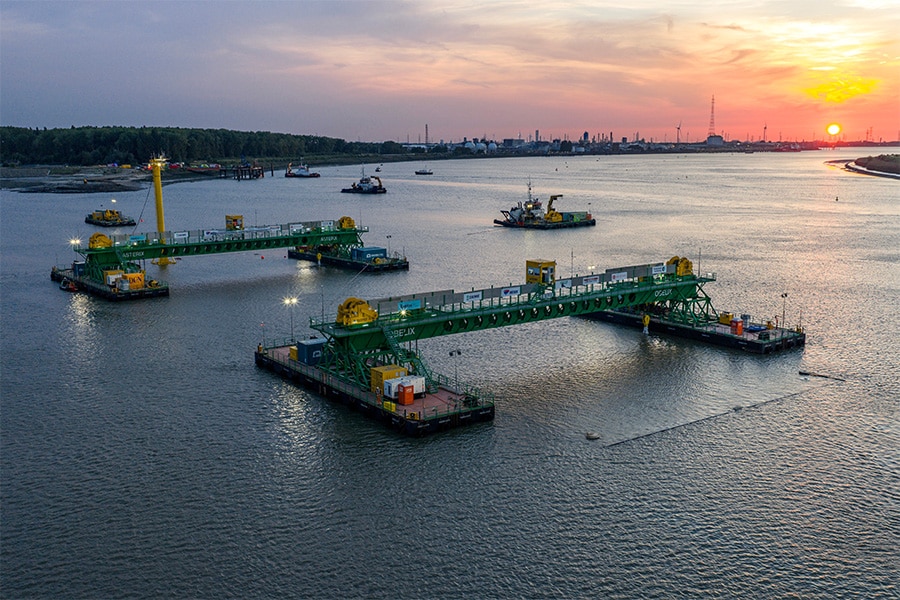
Dike reinforcement can be much cheaper thanks to new research
The Netherlands has a unique system of primary and regional flood defenses that protect us from flooding. To ensure water safety also in the future, the High Water Protection Program (HWBP) is reinforcing 1,500 kilometers of dikes, 400 locks and pumping stations until 2050. New knowledge from research by Fugro together with the Hollandse Delta water board (WSHD), the High Water Protection Program (HWBP) and Deltares shows that dike reinforcement in areas with tidal sand under the dikes can be much cheaper.
Dutch dikes are periodically assessed for failure mechanisms including piping, height and stability. "Piping, or the formation of unwanted channels under a dike, occurs regularly in the Netherlands," says Gert-Ruben van Goor, Senior Project Leader for Hydraulic Engineering at Fugro. "This involves water with sand particles flowing under the dike due to the difference in water levels on the outside and inside of the dike. When it comes to small amounts, this is not a problem. But a larger flow of water carrying sand can seriously weaken a dike or even cause it to collapse."
Huge impact
Until now, calculation rules from 2011 have been used to assess whether the risk of piping is sufficiently small. The dike reinforcement operation within the High Water Protection Program, an alliance of the 21 water boards and Rijkswaterstaat, is also based on these rules. And so some 1,500 kilometers of dikes are scheduled to be reinforced until 2050. "A gigantic operation," Gert-Ruben rightly states. "One solution to prevent the effect of piping is to increase the seepage path length by constructing so-called piping berms. Then the flow resistance increases. As a rule, you need a lot of space to do this, and there is often none along the dike. Therefore, an alternative is often used, such as installing steel sheet piling in the dike. A steel sheet pile wall is a costly solution, with installation often being complex because of the limited space."
Piping tests
The Flood Protection Program funds all dike reinforcements in the Netherlands. "They are aware of the enormous impact of this operation and encourage knowledge development and innovations that reduce the impact. An annual sum of 10 million euros is set aside for this purpose," says Gert-Ruben. The calculation rules for assessing piping are based on relatively coarse sand, representative of river sand. In contrast, tidal sand (along the coast) has a different composition, consisting of a largely finer fraction interspersed with a coarser grain. And that offers more resistance to piping, Deltares previously concluded on a laboratory scale. Based on that hypothesis, a full-scale piping test was conducted in 2020 on the Vijfhuisterdijk in Friesland, and from that collaboration, two full-scale piping tests were recently conducted in the Hedwigepolder in Zeeland.

Hedwigepolder
The Hedwigepolder was de-poldered and made available as a testing ground for large-scale research into dike safety prior to the excavation of dikes. "From a European program, all kinds of research has been carried out here in the field of calamities, overtopping, etc. Because of the enormous task of water board Hollandse Delta on piping, the water board participated in the research, providing project management and environmental management. Initially, the intention was to carry out the tests on a primary water barrier, but this proved impossible due to the soil structure. We therefore built a full-scale 'fake dike' in the polder where the soil was suitable, using soil from the area. Large-scale tests were carried out on this in accordance with an extensive research plan," Gert-Ruben explains. "Via an extensive monitoring system including more than 200 pore pressure gauges, we were able to follow the piping course very accurately during the test. Using our HPT-AMPT® technique, we were able to determine the horizontal and vertical permeability and thus translate the complex soil structure and properties into a mathematical model. In this way, we could very accurately determine the resistance of the tidal sand to piping."
CSI phase
After the test, the research team excavated the dike down to the level of the pipe. "This was to verify and validate the measurement results, and to expose the piping course at the archaeological level. We also called this the CSI phase," says Gert-Ruben. "And what turned out, the results matched one to one. So the predictions and measurements were correct. Dikes on tidal sand are less sensitive to piping than river sand. Because tidal sand is much less permeable than river sand and contains many more clay particles and clay layers, the water flows more slowly and sand grains move less quickly than with river sand. A nice side benefit was that we were able to determine that a pipe never develops in a straight line." But, how much stronger is tidal sand? "According to our research, a little more than a factor of 2. Nevertheless, as a safe calculation rule, we use a factor of 1.4, and this can be applied throughout the Netherlands where tidal sand is under dikes. This results in an enormous reduction of the piping scope, particularly in coastal areas. In some sections the entire reinforcement task is eliminated or much smaller."
The Water Safety Expertise Network advises on the new calculation rules and, based on this, they are incorporated into the new assessment and design instruments. "Waterboard Hollandse Delta and Wetterskip Fryslan are already applying the new knowledge in their dike reinforcement projects," Gert-Ruben knows. "So it is already bearing fruit. The High Water Protection Program has therefore complimented our research team Fugro, Deltares and water board Hollandse Delta on the proactive approach, stating that the business case is very easy to make. Nice to be able to contribute to that from Fugro." Thanks to this project, at least 160 million euros will be saved within the High Water Protection Program, local residents will have less inconvenience from any work and the environment will be less affected. The savings in CO2-emissions is at least 97 tons equivalent to 776 transatlantic flights, Fugro calculated. Finally, Gert-Ruben reveals that there are plans to conduct similar tests in river areas. To be continued! ■
Heeft u vragen over dit artikel, project of product?
Neem dan rechtstreeks contact op met Fugro.
 Contact opnemen
Contact opnemen




